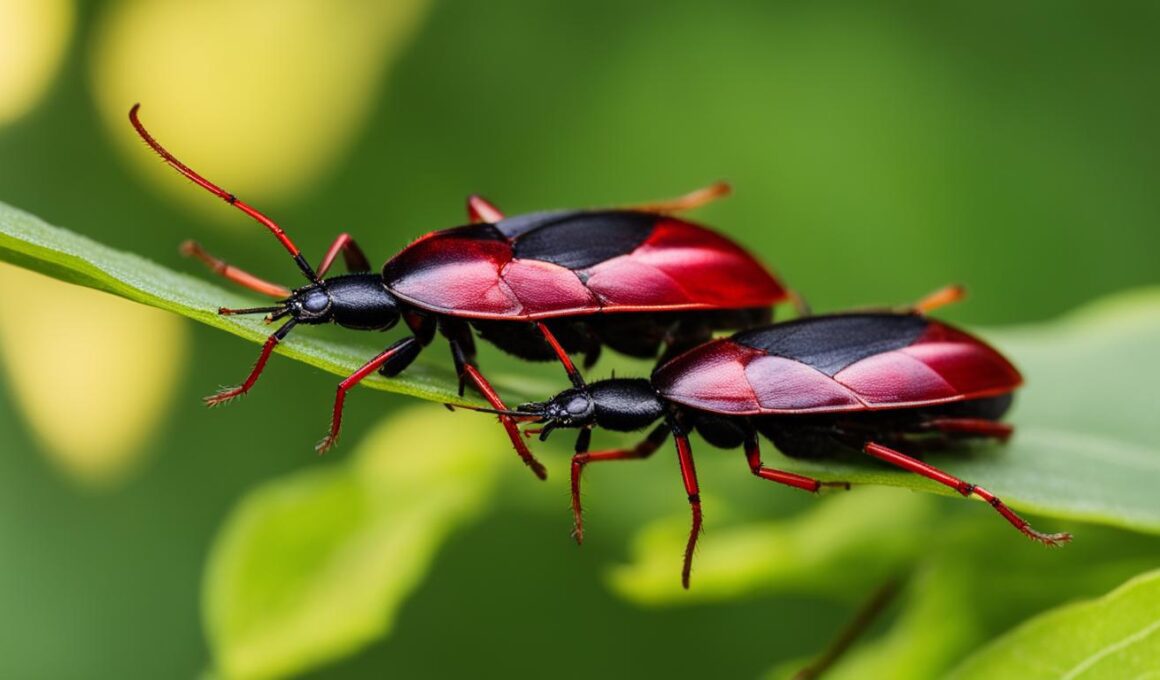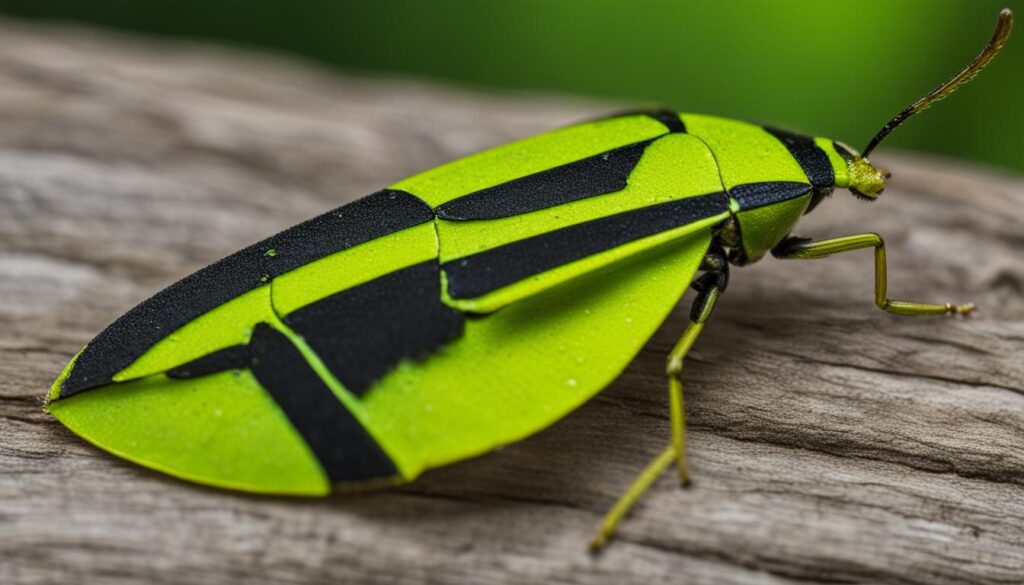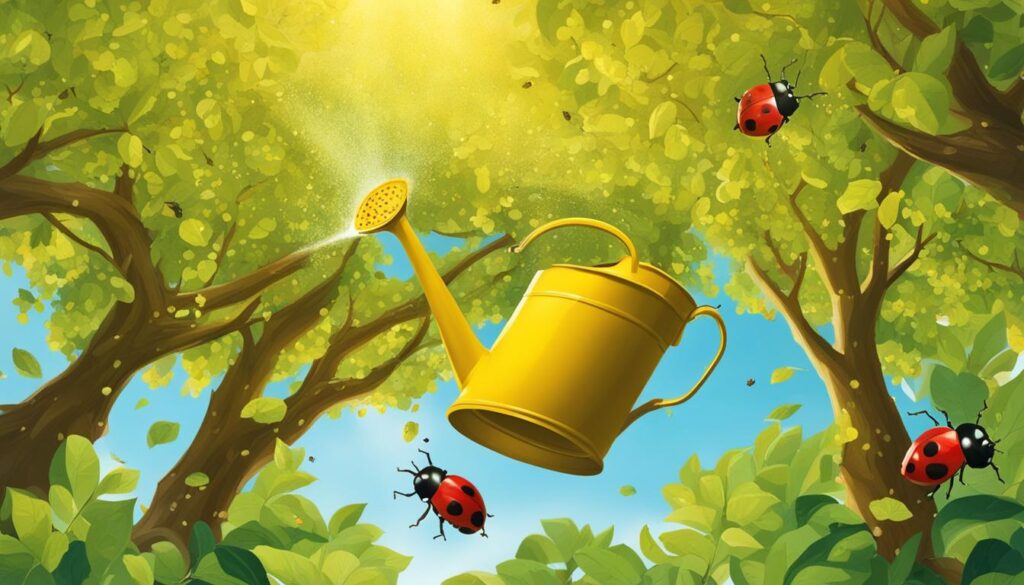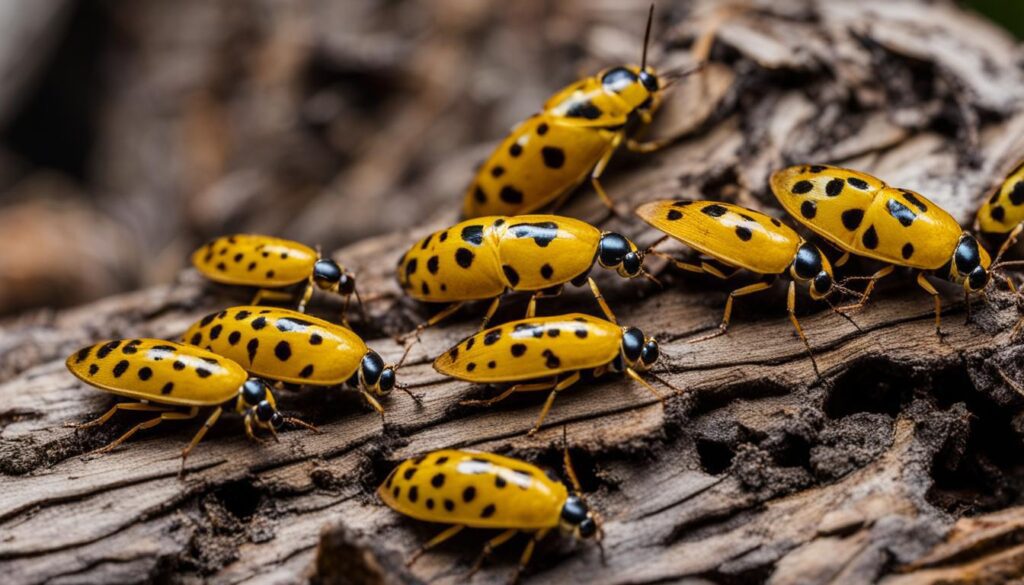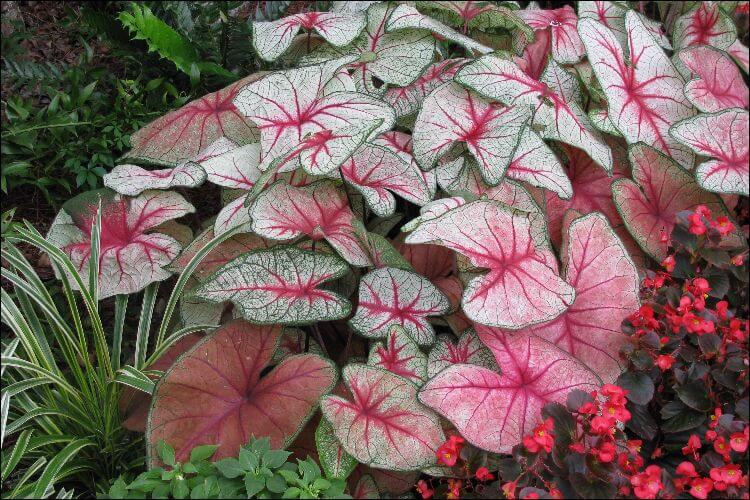If you have a garden, you may encounter the nuisance of golden rain tree bugs. These small insects are attracted to the seeds of golden rain trees and can quickly multiply, causing a headache for gardeners. But fear not, with the right methods, you can effectively manage and reduce their population.
Post Summary
- Golden rain tree bugs are attracted to the seeds of golden rain trees and can quickly multiply
- They are harmless to the trees but can become a nuisance when their populations grow
- Identifying golden rain tree bugs is important to differentiate them from other insects
- Non-toxic methods, such as spraying with soapy water, can help control their population
- Regular monitoring, maintenance, and cultural practices can prevent infestations
Understanding Golden Rain Tree Bugs
Golden rain tree bugs, also known as Jadera bugs or red-shouldered bugs, are dark gray or black insects with red markings. They feed exclusively on the seeds of golden rain trees and chinaberry trees. These bugs lay their eggs in the soil under the trees, and the nymphs hatch and mature into adults within a few weeks. Golden rain tree bugs are harmless to the trees but can become a nuisance when their populations multiply.
These bugs can be identified by their dark gray or black bodies with two bright red lines on the thorax. They have red markings on their wings and bold red eyes. Nymphs are bright red with black legs and antennae. Although they are often confused with boxelder bugs, their distinctive features and preference for golden rain trees help differentiate them.
Characteristics of Golden Rain Tree Bugs:
- Dark gray or black bodies
- Two bright red lines on the thorax
- Red markings on wings
- Bold red eyes
- Bright red nymphs with black legs and antennae
Understanding the behavior and life cycle of golden rain tree bugs is crucial for effective control and management. By implementing targeted strategies, such as non-toxic removal methods and cultural practices, you can reduce their numbers and minimize their impact on your garden.
Identifying Golden Rain Tree Bugs
Golden rain tree bugs can be easily identified by their distinctive appearance. These bugs have dark gray or black bodies with two bright red lines on their thorax. Their wings also showcase red markings, and they have bold red eyes. Nymphs, on the other hand, are bright red with black legs and antennae. It’s important to note that golden rain tree bugs are often confused with boxelder bugs, but their preference for golden rain trees helps distinguish them from other insects.
Appearance of Golden Rain Tree Bugs
Golden rain tree bugs have a unique and recognizable appearance. Their dark gray or black bodies, coupled with the two bright red lines on their thorax, make them stand out. The red markings on their wings and striking red eyes further contribute to their distinct look. When these bugs are in the nymph stage, they are bright red with black legs and antennae.
How to Recognize Golden Rain Tree Bugs
Recognizing golden rain tree bugs is relatively easy once you know their characteristics. Look for bugs that have dark gray or black bodies with two red lines on their thorax. Their wings will also display red markings, and their eyes will be a bold shade of red. When identifying nymphs, keep an eye out for their bright red coloration with black legs and antennae. By familiarizing yourself with these key features, you can confidently identify golden rain tree bugs.
Distinguishing Golden Rain Tree Bugs from Other Insects
Distinguishing golden rain tree bugs from other insects, such as boxelder bugs, can be challenging due to their similar appearance. However, there are a few key factors that can help differentiate them. Golden rain tree bugs have a strong preference for golden rain trees and chinaberry trees, while boxelder bugs feed on boxelder trees. Additionally, the red markings on golden rain tree bugs’ wings and their bold red eyes set them apart from boxelder bugs. By paying attention to these distinguishing features and their preferred habitats, you can distinguish golden rain tree bugs from other insects.
| Appearance | How to Recognize | Distinguishing Factors |
|---|---|---|
| Dark gray or black bodies | Look for two red lines on the thorax | Preference for golden rain trees, red markings on wings, bold red eyes |
| Bright red nymphs | Identify black legs and antennae | Feeding on chinaberry trees, distinct appearance from boxelder bugs |
The Impact of Golden Rain Tree Bugs
While golden rain tree bugs do not cause significant damage to the trees, their presence can be a nuisance. These bugs congregate in large numbers to feed on the sap, flowers, buds, and seeds of the trees, creating unsightly clusters. The dense clusters of golden rain tree bugs covering the entire tree can be particularly bothersome for homeowners. In addition to their aesthetic impact, these bugs can also invade homes in search of overwintering sites, further adding to the nuisance they cause.
Although the damage caused by golden rain tree bugs is not severe, their large populations can still have an adverse effect on the health of the trees. The constant feeding can weaken the tree’s growth and make it more susceptible to other pests and diseases. Additionally, the accumulation of bug droppings and discarded exoskeletons can create a messy environment around the trees.
“The clusters of golden rain tree bugs covering the entire tree make it look unattractive and messy. It’s frustrating to see our otherwise beautiful golden rain trees being overrun by these bugs,” says garden enthusiast Jane.
Overall, while the direct damage caused by golden rain tree bugs may be minimal, the nuisance and potential impact on the tree’s health make their management and control important for maintaining a healthy and aesthetically pleasing garden.
Comparison of Golden Rain Tree Bugs and Other Garden Pests
| Golden Rain Tree Bugs | Boxelder Bugs | Japanese Beetles |
|---|---|---|
| Feed on golden rain tree seeds | Feed on seeds of boxelder trees | Feed on a variety of plants |
| Dark gray or black with red markings | Dark brown or black with red marks | Metallic green with tan wings |
| Non-destructive to trees | Non-destructive to trees | Can cause significant damage to plants |
| Can invade homes in large numbers | Can invade homes in large numbers | Do not invade homes |
| Non-Toxic Methods for Golden Rain Tree Bug Removal | Effectiveness | Benefits |
|---|---|---|
| Soapy Water Spray | Effective in killing bugs on contact | Safe for the environment |
| Remove Fallen Seeds | Reduces the food source for bugs | Prevents further infestations |
| Maintain Garden Hygiene | Creates an unfavorable environment for bugs | Improves overall garden health |
These non-toxic methods are a great alternative to chemical pesticides, allowing you to manage golden rain tree bugs in a safe and eco-friendly manner. By combining these natural approaches with regular monitoring and maintenance, you can effectively control the population of these pests and maintain a thriving garden.
Physical Removal of Golden Rain Tree Bugs
If the population of golden rain tree bugs is manageable, you can try removing them manually by hand. This method requires wearing gloves to protect your hands and carefully picking up the bugs. You can then place them in a container filled with soapy water to drown them. While this method can be time-consuming, it can be effective for small infestations.
When manually removing golden rain tree bugs, it’s important to be thorough and persistent. Inspect the trees and surrounding areas, paying attention to areas where the bugs congregate, such as branches, leaves, and bark crevices. Gently collect the bugs and dispose of them properly after each session.
“Manual removal can be a labor-intensive process, but it offers a non-toxic and eco-friendly solution to control golden rain tree bug populations. By physically removing the bugs, you can directly reduce their numbers and prevent further reproduction.”
Keep in mind that physical removal alone may not completely eliminate golden rain tree bugs, as their populations can rebound quickly. It’s essential to combine manual removal with other control methods to achieve better results. Additionally, regularly monitoring the trees for signs of new infestations and implementing preventive measures can help reduce the need for manual removal in the future.
Effectiveness of Manual Removal
| Pros | Cons |
|---|---|
| – Non-toxic and eco-friendly | – Time-consuming |
| – Directly reduces bug numbers | – Ineffective for large infestations |
| – Provides immediate control | – Requires patience and persistence |
Table: Pros and Cons of Manual Removal of Golden Rain Tree Bugs
Cultural Practices to Prevent Golden Rain Tree Bug Infestations
Preventing golden rain tree bug infestations requires implementing cultural practices that discourage these pests from taking up residence in your garden. By following these methods, you can significantly reduce the risk of a bug population explosion and the nuisance they bring.
Eliminate Their Food Source
Golden rain tree bugs are attracted to the seeds of the golden rain tree and chinaberry tree. To prevent infestations, regularly rake up fallen seeds and debris from under these trees. By removing their food source, you make the environment less attractive to these bugs, reducing the likelihood of an infestation.
Promote Airflow and Reduce Foliage
Golden rain tree bugs thrive in dense foliage. Pruning the trees to improve airflow and reduce dense foliage can make the area less appealing to these pests. Regularly trim branches and thin out excessive growth to create an environment that is less conducive to bug infestations.
Create Barriers
To prevent golden rain tree bugs from entering your home, create barriers around vulnerable areas such as doors and windows. Use weather stripping to seal gaps and install screens on windows and doors to keep these bugs out. By blocking their entry points, you can effectively reduce the risk of indoor infestations.
Summary:
Implementing cultural practices such as eliminating their food source, promoting airflow and reducing foliage, and creating barriers can help prevent golden rain tree bug infestations. By following these methods, you can maintain a bug-free garden and minimize the impact of these pests on your living space.
Hiring Professional Pest Control for Golden Rain Tree Bugs
If you have tried non-toxic methods and cultural practices to remove golden rain tree bugs from your garden but have not had success, it may be time to consider hiring a professional pest control company. Expert pest control technicians have the knowledge and experience to effectively exterminate golden rain tree bugs and eliminate severe infestations.
“Professional pest control companies are trained in dealing with a wide range of pest infestations, including golden rain tree bugs. They can assess the extent of the problem and develop a customized treatment plan to target the bugs specifically. Hiring professionals ensures that the removal process is done safely and effectively, giving you peace of mind.”
When choosing a pest control company, look for one that specializes in treating golden rain tree bugs or has experience with similar insect infestations. Make sure they are licensed and insured, and ask for references or read reviews from previous customers to ensure their reliability and expertise.
Benefits of Hiring Professional Pest Control for Golden Rain Tree Bugs
There are several benefits to hiring a professional pest control company for golden rain tree bug removal:
- Expertise: Pest control technicians have extensive knowledge of golden rain tree bug behavior, life cycles, and effective extermination methods. They can develop a targeted approach to eradicate the bugs from your property.
- Safe and Effective Treatment: Professionals use specialized equipment and approved pesticides to safely and effectively eliminate golden rain tree bugs without harming your trees, other plants, or the environment.
- Long-Term Prevention: Pest control companies can provide guidance on preventing future infestations by implementing proactive measures and recommending ongoing maintenance practices.
By hiring a professional pest control company, you can ensure that the golden rain tree bugs are removed efficiently, minimizing the impact on your garden and restoring peace and beauty to your outdoor space.
Monitoring and Maintenance
Monitoring and maintaining golden rain tree bug populations is crucial for long-term control and prevention of infestations. By implementing effective strategies, you can minimize the impact of these bugs on your garden and ensure the health of your trees.
One key aspect of monitoring golden rain tree bug populations is regular inspection of the trees and surrounding areas. Look for signs of bugs, such as clusters of bugs on the trees or the presence of their eggs. If you notice an increase in the population, it’s important to take action promptly to prevent further infestation.
To maintain control over golden rain tree bugs, it is recommended to repeat the non-toxic removal methods mentioned in Section 5, such as spraying the bugs with soapy water or manually removing them. Additionally, keeping the area around the trees clean and free of fallen seeds and debris can help reduce the bugs’ food source and discourage their presence.
Golden Rain Tree Bug Maintenance Strategies:
- Regularly inspect the trees and surrounding areas for signs of bugs or their eggs.
- Use non-toxic removal methods, such as spraying bugs with a soapy water solution or manually removing them.
- Keep the area around the trees clean and free of fallen seeds and debris.
- If necessary, seek professional assistance to ensure effective control of severe infestations.
By consistently monitoring and maintaining your garden, you can prevent future outbreaks of golden rain tree bugs. Implementing cultural practices, as discussed in Section 7, can also contribute to long-term bug control. Remember that complete eradication of these bugs may not be achievable, but with proper monitoring and maintenance, you can keep their populations in check and enjoy your garden without the nuisance of golden rain tree bugs.
Additional Tips for Dealing with Golden Rain Tree Bugs
Managing golden rain tree bugs can be challenging, but with the right strategies, you can effectively control their populations and minimize their impact on your garden. Here are some additional tips to help you in your battle against these pesky bugs:
- Prune the trees: Regular pruning helps improve airflow and reduces dense foliage, making the area less attractive to golden rain tree bugs.
- Maintain cleanliness: Keep the area around the trees clean and free of fallen seeds and debris. This eliminates their food source and discourages their presence.
- Create barriers: Install barriers around vulnerable areas, such as doors and windows, to prevent golden rain tree bugs from entering your home.
- Monitor regularly: Regularly inspect the trees for signs of infestation, such as clusters of bugs or their eggs. Prompt action can prevent the population from growing.
- Consider alternative trees: If you’re consistently dealing with golden rain tree bugs, you might consider planting alternative tree species that are less attractive to these bugs.
By following these tips, you can effectively manage golden rain tree bug populations and enjoy a bug-free garden.
The Persistence of Golden Rain Tree Bugs
Dealing with golden rain tree bugs can be a challenging task. These persistent insects have a strong attraction to golden rain trees and can quickly multiply if left unchecked. Managing their populations requires a combination of effective control methods and proactive measures to reduce their impact on your garden.
One of the main challenges in golden rain tree bug removal is their ability to bounce back even after implementing control strategies. These bugs are resilient and can adapt to different environmental conditions, making it difficult to completely eradicate them. However, by focusing on managing their populations rather than complete elimination, you can effectively minimize their presence in your garden.
To deal with persistent golden rain tree bugs, it’s important to implement a comprehensive approach. This includes using non-toxic methods such as spraying the bugs with soapy water or physically removing them by hand. Additionally, maintaining good garden hygiene, like removing fallen seeds and debris, can help prevent the bugs from multiplying.
Regular monitoring and maintenance are essential for long-term golden rain tree bug control. By regularly inspecting your trees and surrounding areas for signs of infestation, you can take prompt action if you notice a resurgence in the bug population. Implementing cultural practices like pruning the trees to improve airflow and reducing dense foliage can also make the area less attractive to the bugs.
| Challenges of Golden Rain Tree Bug Removal | Dealing with Persistent Golden Rain Tree Bugs | Managing Golden Rain Tree Bug Populations |
|---|---|---|
| Resilient and adaptable nature of the bugs | Implement non-toxic removal methods | Regular monitoring and maintenance |
| High attraction to golden rain trees | Maintain good garden hygiene | Implement cultural practices |
| Rapid population growth | Physically remove bugs by hand | Seek professional assistance if needed |
While complete eradication of golden rain tree bugs may not be achievable, effective management and control can significantly reduce their numbers. By staying vigilant and implementing a combination of methods, you can successfully minimize the impact of these persistent insects on your garden.
Conclusion
Dealing with golden rain tree bugs can be frustrating, but with the right methods, you can manage and reduce their population. These small insects are attracted to the seeds of golden rain trees and can quickly multiply, becoming a nuisance in your garden. However, complete eradication of these bugs may be challenging.
To control golden rain tree bugs, it is important to understand their behavior and identify them correctly. These bugs have dark gray or black bodies with distinctive red markings. Differentiating them from other insects, such as boxelder bugs, can help in implementing effective removal methods.
Non-toxic methods, such as spraying the bugs with soapy water or manually removing them, can be employed to reduce their numbers. Implementing cultural practices like regular cleaning of fallen seeds and debris, pruning for improved airflow, and creating barriers can also help prevent infestations. If non-toxic methods are not effective, seeking professional pest control services can be considered.
Remember that complete eradication of golden rain tree bugs may not be achievable, but by using a combination of control and management strategies, you can effectively minimize their impact on your garden. Regular monitoring, maintenance, and proactive measures will help prevent future outbreaks. Safeguard your garden today and enjoy the beauty of your golden rain trees without the nuisance of these bugs.
Can homemade bug sprays be effective for getting rid of golden rain tree bugs as well?
Yes, homemade bug sprays can be effective for getting rid of golden rain tree bugs as well. There are various natural ingredients found in homemade bug sprays that can effectively deter these pests from your vegetable plants, making it a cost-effective and eco-friendly solution for pest control.
FAQ
How do I identify golden rain tree bugs?
Golden rain tree bugs are dark gray or black insects with red markings. They have two bright red lines on the thorax and red markings on their wings and eyes. Nymphs are bright red with black legs and antennae. They can be differentiated from other bugs by their distinctive features and preference for golden rain trees.
Are golden rain tree bugs harmful to trees?
Golden rain tree bugs do not cause significant damage to the trees. They feed on the sap, flowers, buds, and seeds of the trees, which can be unsightly when they congregate in large numbers. However, the bugs are harmless to the overall health of the trees.
How can I get rid of golden rain tree bugs without using pesticides?
One non-toxic method is to spray the bugs with a solution of soapy water to suffocate and kill them. Removing fallen seeds and keeping the area clean can also help reduce their population. Manual removal by hand is another option for small infestations.
How can I prevent golden rain tree bug infestations?
Maintain good garden hygiene by regularly raking up fallen seeds and debris. Prune the trees to improve airflow and reduce dense foliage. Creating barriers around vulnerable areas, such as doors and windows, can also help prevent the bugs from entering your home.
When should I seek professional pest control for golden rain tree bugs?
If non-toxic methods have not been effective or you are dealing with a severe infestation, it may be necessary to seek professional pest control services. Pest control companies have expertise in dealing with various pest infestations, including golden rain tree bugs.
What can I do to prevent future infestations of golden rain tree bugs?
Regularly monitor the trees and surrounding areas for signs of bugs or their eggs. Maintain good garden hygiene and implement cultural practices, such as removing fallen seeds and debris, to prevent future infestations. Consider planting alternative tree species that are not attractive to golden rain tree bugs.





